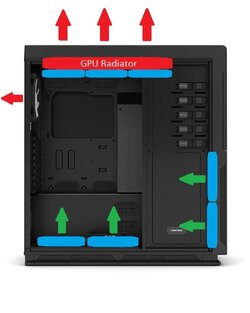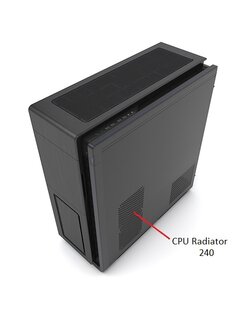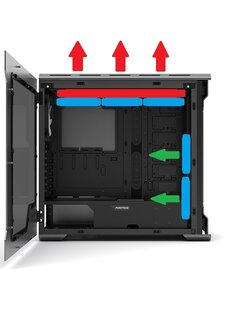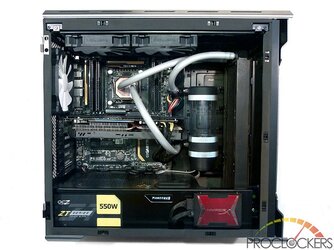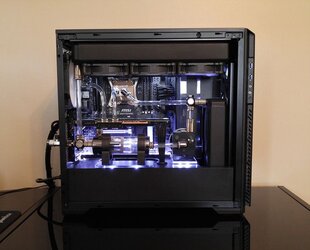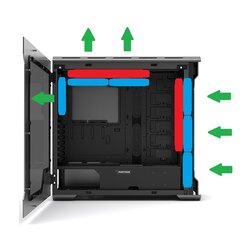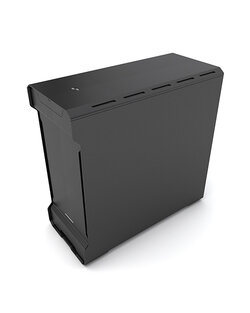Hi all, I'm new here and this is the first ever computer forum I've joined. I'm looking to build a brand new (also first water-cooled) pc to run the Asus PG279Q 1440p 165hz G-sync monitor.
Specs:
Asus Maximus VIII Formula motherboard
Intel i7-6700K
Nvidia GTX 980Ti
Corsair Dominator Platinum CMD16GX4M4C3200C15 (4x4GB)
Cooler Master V850 80 Plus Gold PSU
Samsung 850 Pro 256GB SSD
Water-cooling components that I've decided on so far:
EK Supremacy Evo Elite Edition 1151 CPU block
XSPC Razor GTX 980 GPU block
EK Full cover GTX 980 Nickel backplate
The reservoir and pump will depend on the case, I was going to get the Phanteks Enthoo Evolve ATX case because the tempered glass version looks extremely sexy, however it is too small and the exhaust doesn't look very promising. So the most likely candidate right now is the Enthoo Primo.
With this huge case, I'm thinking of running 2 separate loops for the CPU and GPU, using the top to mount the GPU radiator and the right side panel to mount the CPU radiator, they will both be pushing air out of the case. For intake fans there will be 2 in the front, and 2 in the bottom, there will also be a single exhaust fan on the rear.
What do you guys think of this set-up? Any flaws? I avoided mounting a radiator in the front because I don't want hot air inside the case, so both radiators will be mounted at exit points, is this a good approach? The bottom intake fans also provide direct cool airflow to the top mounted radiator to push hot air out of the case. The top radiator will most likely be a 360 and the side radiator will be a 240.
As for a pump, is D5 always better, I watched one of JayzTwoCents' video and he said although D5 has a lot of air flow, it doesn't have as much head pressure. So if I make my loop as simple as possible, and with one loop only going through one block, is the D5 a better choice?
Thanks guys.
Specs:
Asus Maximus VIII Formula motherboard
Intel i7-6700K
Nvidia GTX 980Ti
Corsair Dominator Platinum CMD16GX4M4C3200C15 (4x4GB)
Cooler Master V850 80 Plus Gold PSU
Samsung 850 Pro 256GB SSD
Water-cooling components that I've decided on so far:
EK Supremacy Evo Elite Edition 1151 CPU block
XSPC Razor GTX 980 GPU block
EK Full cover GTX 980 Nickel backplate
The reservoir and pump will depend on the case, I was going to get the Phanteks Enthoo Evolve ATX case because the tempered glass version looks extremely sexy, however it is too small and the exhaust doesn't look very promising. So the most likely candidate right now is the Enthoo Primo.
With this huge case, I'm thinking of running 2 separate loops for the CPU and GPU, using the top to mount the GPU radiator and the right side panel to mount the CPU radiator, they will both be pushing air out of the case. For intake fans there will be 2 in the front, and 2 in the bottom, there will also be a single exhaust fan on the rear.
What do you guys think of this set-up? Any flaws? I avoided mounting a radiator in the front because I don't want hot air inside the case, so both radiators will be mounted at exit points, is this a good approach? The bottom intake fans also provide direct cool airflow to the top mounted radiator to push hot air out of the case. The top radiator will most likely be a 360 and the side radiator will be a 240.
As for a pump, is D5 always better, I watched one of JayzTwoCents' video and he said although D5 has a lot of air flow, it doesn't have as much head pressure. So if I make my loop as simple as possible, and with one loop only going through one block, is the D5 a better choice?
Thanks guys.
